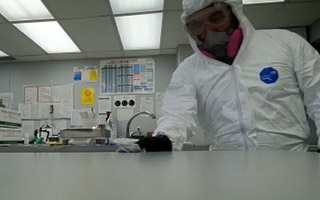

The Importance of Sanitizing
The latest pandemic of the Coronavirus disease is affecting most of us in one way or another. The current lockdown in place aimed to help prevent the spread of COVID-19 has resulted in many businesses being closed and many people being advised to stay at home. With no vaccine in sight and people isolated in their homes, one of the most common questions being asked online is “What can I do to prevent the coronavirus disease at home?”
This is where the importance of sanitizing comes into play. Besides regularly washing our hands and avoiding close contact with others (within 6 feet), sanitizing our home plays a big role in the prevention of Coronavirus. Whenever we go out to purchase supplies at a grocery store or pharmacy, there is a chance we will pick up germs left behind by others on anything we touch. Those possibly contaminated germs then get transferred to our homes and put us and our loved ones at risk of contracting a disease.
That is why it's so important to clean and sanitize frequently touched surfaces and objects in our homes daily. Sanitization helps reduce the number of pathogens on surfaces and ensures a cleaner and safer environment.
What Is Sanitizing?
The definition of sanitizing is...
Disinfection vs Sanitizing
Disinfection is the use of EPA-approved chemicals...
The Proper Way to Sanitize Surfaces
The process for sanitizing food contact surfaces differs...
4-Step Sanitizing Process for Food Contact Surfaces
Food contact surfaces mean any surface...
2-Step Sanitizing Process for Non-Food Contact Surfaces
There are only two steps to sanitize frequently touched...
What Are the Methods of Sanitizing?
Sanitizing an object or surface can be done...
Heat
To sanitize surfaces with heat, you can use steam...
Chemicals
The three most common types of chemicals...
Radiation
The radiation method of sanitizing and sterilizing...
Sanitizing Products
Not all sanitizing products will be ...
What Are the Differences Between Cleaning, Sanitizing, and Disinfecting?
Even though people tend to use these terms interchangeably...
Professional Sanitizing and Disinfection Services
Sanitizing is an effective method of Coronavirus prevention...

